
# 5298l - 2018 First-Class Forever Stamp - Maroon Bells, Colorado
U.S. #5298l
2018 50¢ O Beautiful – Maroon Bells-Snowmass Wilderness, Colorado
Over the years, Congress has created several organizations to protect America’s natural beauty. The National Wilderness Preservation System (NWPS) is one of them.
The Wilderness Act
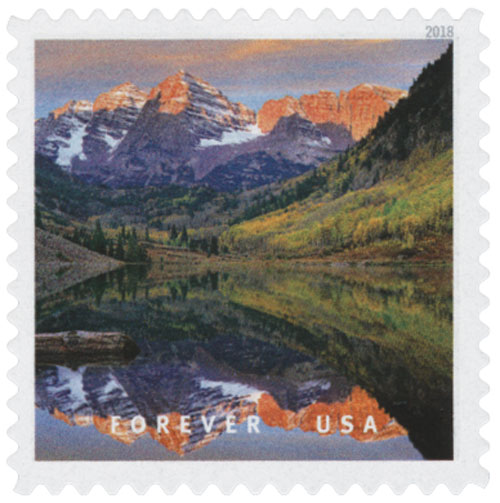
On September 3, 1964, President Lyndon Johnson signed the Wilderness Act. The act protected 9 million acres from development and created the National Wilderness Preservation System that consists of more than 111 million acres today.
There has long been a debate over the protection of wilderness areas. Wilderness is defined as “an area where the earth and community of life are untrammeled by man, where man himself is a visitor who does not remain.”
Some believed that it was important to protect these areas; that they are necessary to balance out industrial expansion. Those that oppose it argued that it was senseless to lock away the valuable resources that these lands held.
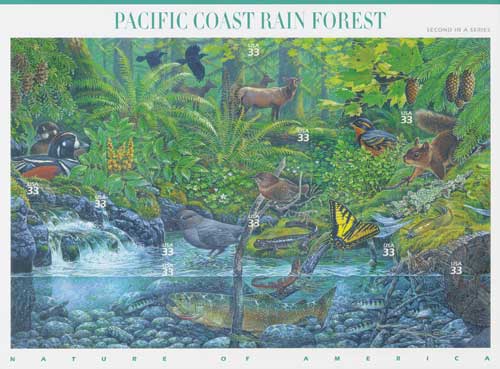
The fight reached a high in the 1950s when the federal government proposed building the Echo Park Dam in Dinosaur National Monument. Several environmental groups including the Wilderness Society and the Sierra Club opposed the development, arguing that the land should be protected to preserve its natural resources. By 1955, the government decided to abandon the project.
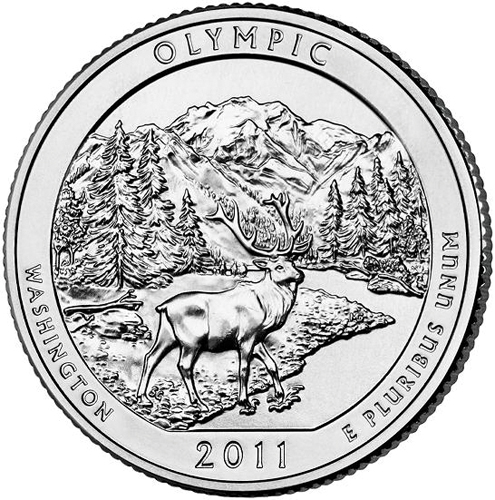
Among those who participated in the fight was Howard Zahniser, an officer in the Wilderness Society. After their victory, he proposed that they take further steps to protect more lands, by introducing legislation. He composed the first draft of his Wilderness Act in 1956. It would place all wildlands and unspoiled areas (without roads or accommodations) into a wilderness system. This system would protect those lands from development and set up a system to add in lands from national parks, monuments, and other federally protected lands.
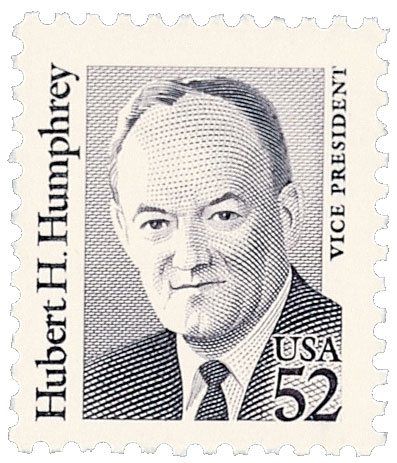
That same year, Hubert H. Humphrey and John Saylor submitted Zahniser’s bill. It faced significant opposition, particularly from people involved in the western mining, grazing, and timber industries. Over the next eight years, the bill was rewritten 66 times. Finally, in 1964, President Lyndon B. Johnson openly expressed his support for the bill, which led to several compromises that helped it to pass Congress. President Johnson then signed it into law on September 3, 1964.
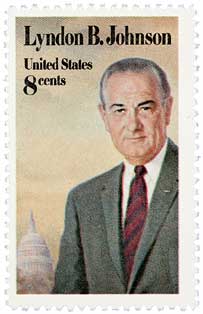
The final Wilderness Act set aside far less land than Zahniser had originally imagined, some exceptions were made for usage, and Congress had to pass an act to add more land to the Wilderness System. While they had scored a major victory in getting the bill passed, some environmentalists were disappointed at the number of compromises that had been made.
Today, the National Wilderness Preservation System consists of over 800 designated wilderness areas, consisting of over 111 million acres. The National Park Service, the US Forest Service, the US Fish, and Wildlife Service, and the Bureau of Land Management manage these lands.
Click here to read the Wilderness Act and here to visit the Wilderness Society’s website.
U.S. #5298l
2018 50¢ O Beautiful – Maroon Bells-Snowmass Wilderness, Colorado
Over the years, Congress has created several organizations to protect America’s natural beauty. The National Wilderness Preservation System (NWPS) is one of them.
The Wilderness Act

On September 3, 1964, President Lyndon Johnson signed the Wilderness Act. The act protected 9 million acres from development and created the National Wilderness Preservation System that consists of more than 111 million acres today.
There has long been a debate over the protection of wilderness areas. Wilderness is defined as “an area where the earth and community of life are untrammeled by man, where man himself is a visitor who does not remain.”
Some believed that it was important to protect these areas; that they are necessary to balance out industrial expansion. Those that oppose it argued that it was senseless to lock away the valuable resources that these lands held.

The fight reached a high in the 1950s when the federal government proposed building the Echo Park Dam in Dinosaur National Monument. Several environmental groups including the Wilderness Society and the Sierra Club opposed the development, arguing that the land should be protected to preserve its natural resources. By 1955, the government decided to abandon the project.

Among those who participated in the fight was Howard Zahniser, an officer in the Wilderness Society. After their victory, he proposed that they take further steps to protect more lands, by introducing legislation. He composed the first draft of his Wilderness Act in 1956. It would place all wildlands and unspoiled areas (without roads or accommodations) into a wilderness system. This system would protect those lands from development and set up a system to add in lands from national parks, monuments, and other federally protected lands.

That same year, Hubert H. Humphrey and John Saylor submitted Zahniser’s bill. It faced significant opposition, particularly from people involved in the western mining, grazing, and timber industries. Over the next eight years, the bill was rewritten 66 times. Finally, in 1964, President Lyndon B. Johnson openly expressed his support for the bill, which led to several compromises that helped it to pass Congress. President Johnson then signed it into law on September 3, 1964.

The final Wilderness Act set aside far less land than Zahniser had originally imagined, some exceptions were made for usage, and Congress had to pass an act to add more land to the Wilderness System. While they had scored a major victory in getting the bill passed, some environmentalists were disappointed at the number of compromises that had been made.
Today, the National Wilderness Preservation System consists of over 800 designated wilderness areas, consisting of over 111 million acres. The National Park Service, the US Forest Service, the US Fish, and Wildlife Service, and the Bureau of Land Management manage these lands.
Click here to read the Wilderness Act and here to visit the Wilderness Society’s website.








